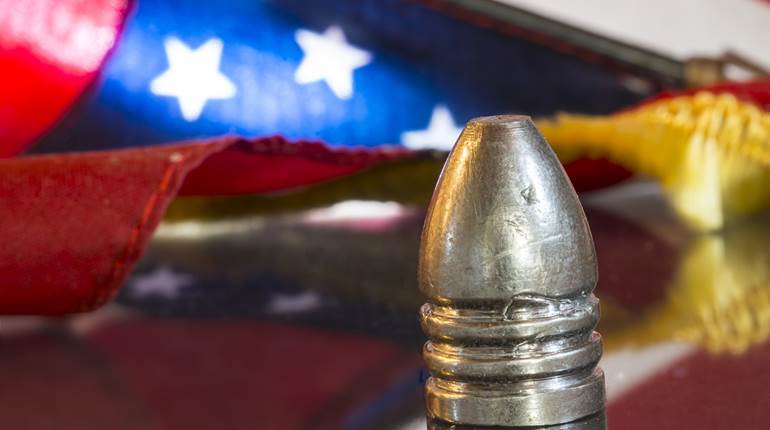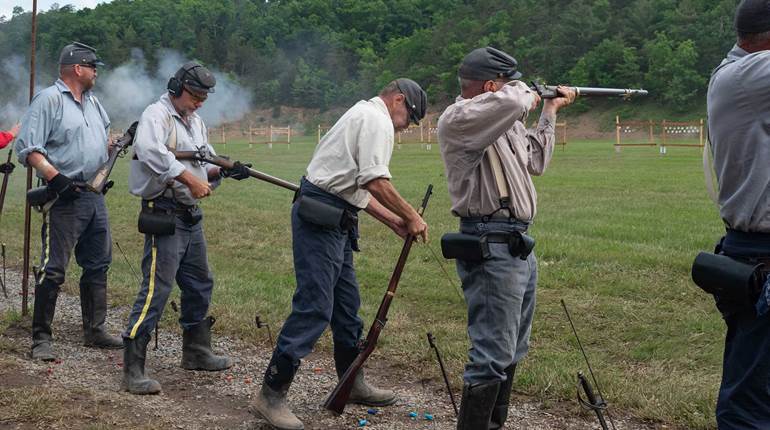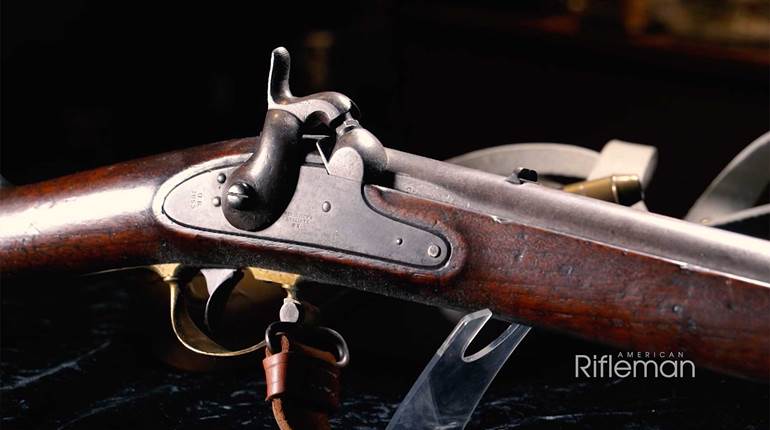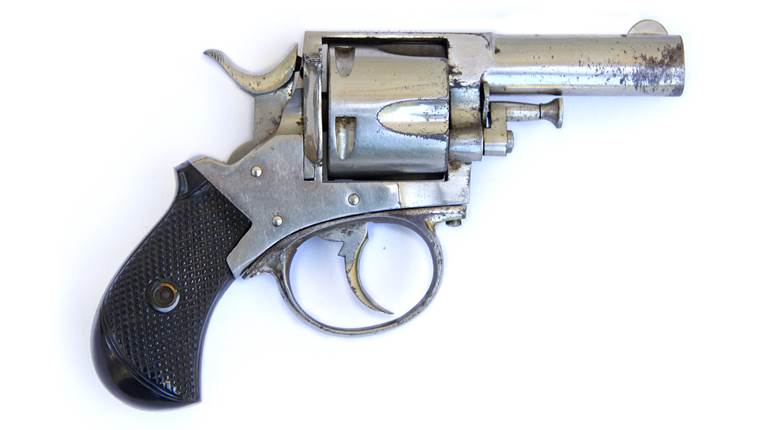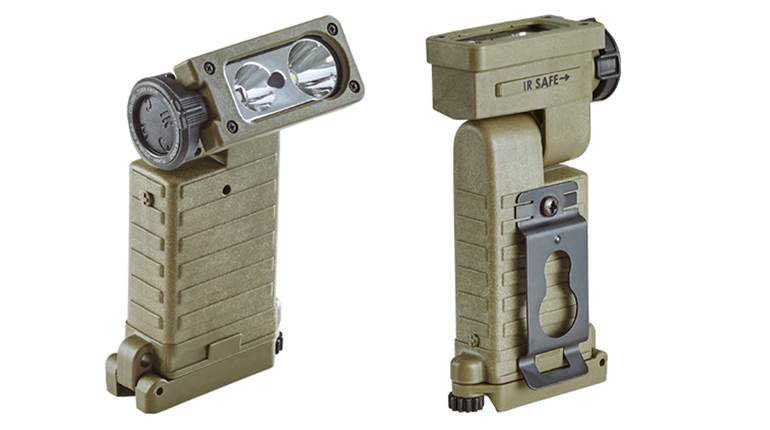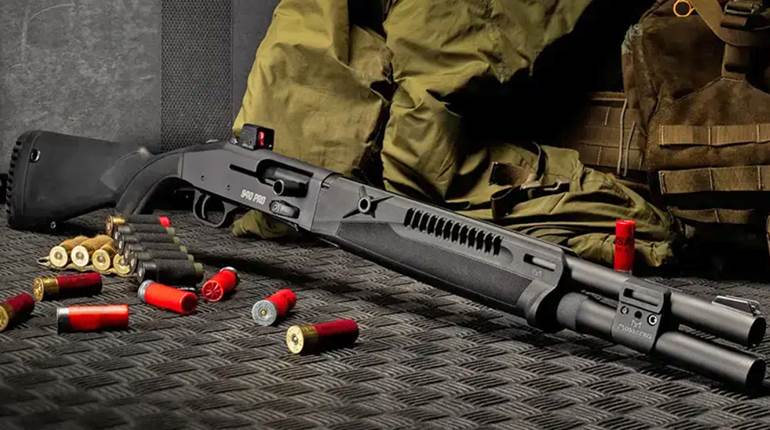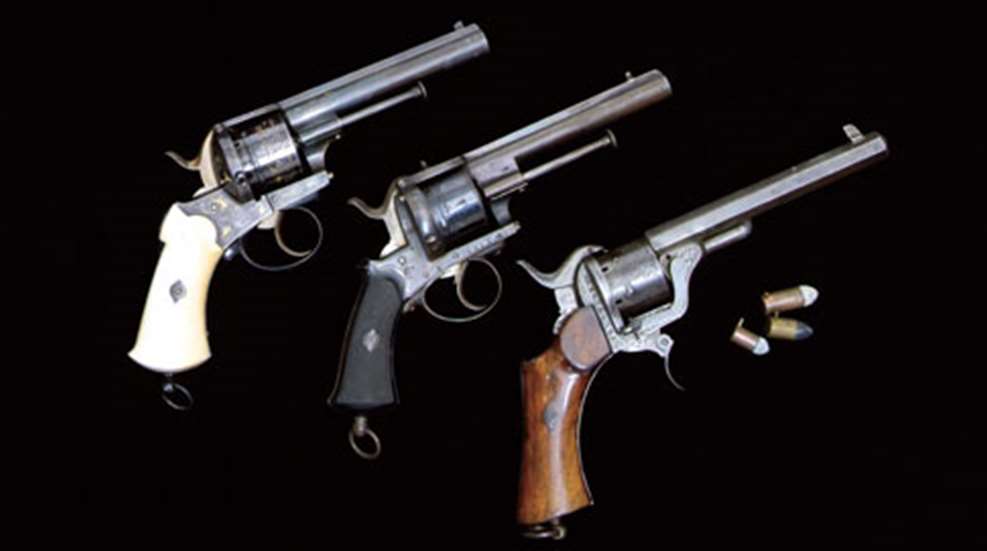
As early as December 1861, it had become clear to both Abraham Lincoln and Jefferson Davis that the Union and the Confederacy would need to import longarms and revolvers from Europe in order to equip the tens of thousands of volunteers fighting on both sides of the Mason-Dixon line. Although the need was far greater for the Southern states, where armsmaking was not a widespread industry, even in the more industrialized North the burden of war would soon outstrip production.
In 1862 President Lincoln commissioned Marcellus Hartley, a partner in the New York firearm-importing firm of Schuyler, Hartley & Graham, to supply the Union with French Lefaucheux revolvers and ammunition. The Lefaucheux was to become the fourth most commonly used revolver in the American Civil War, surpassed only by the Colt, Remington and Starr percussion pistols.
More Than A Decade Ahead Of American Makers
By the mid 1840s, rimfire cartridges were already in use throughout Europe, and by 1854 the first center-fire ammunition had been developed—thus the Europeans were more than a decade ahead of American armsmakers. There was, however, a third type of metallic cartridge, the pinfire, invented in 1843 by French gunmaker Casimir Lefaucheux. His innovative design, which used a small brass pin protruding from the cartridge to ignite an internal primer cap, was so well-received throughout Europe that by the late 1840s, armsmakers were manufacturing revolvers, rifles, and even shotguns to work with a variety of Lefaucheux pinfire ammunition. The pinfire was an ingenious design; the spent cartridges could even be reloaded.
Although Lefaucheux died in 1852, his son Eugene continued his father’s work and in 1854 patented his own invention: the bored-through cylinder. He received his French patent on April 15, 1854, a full year before American Rollin White’s U.S. patent for the same design. By 1857, when Smith & Wesson introduced its first .22 rimfire revolver, the Massachusetts armsmaker had purchased the rights to the White patent, thus giving S&W the exclusive right to manufacture revolvers with bored-through, breechloading cylinders in the United States. This would prove to be a great impediment to arming the North, as White and S&W aggressively litigated every patent infringement, putting several small U.S. armsmakers out of business during the war.
Since S&W was years away from designing its first large-caliber cartridge revolver and was effectively preventing any other U.S. manufacturer from making them, between 1862 and 1865 the Union andConfederacy imported thousands of Lefaucheux revolvers. The U.S. Ordnance Dept. purchased 1,900 pinfire revolvers through Hartley and another 10,000 under direct contract during the war. The Confederacy followed suit, as well as purchasing pinfire versions of the South’s most powerful revolver, the nine-shot LeMat, manufactured in France and Belgium.
The Ordnance Men
On the Union side, Marcellus Hartley handled the majority of requisitions for imported firearms. A key figure in American industry (importing pinfire arms and ammunition before, during and after the war), Hartley was also responsible for establishing the Union Metallic Cartridge Co., one of only three American firms known to have manufactured and marketed pinfire ammunition in any quantity. UMC eventually became one of America’s most important ammunition manufacturers.
Immediately after the attack on Fort Sumter in April 1861, Jefferson Davis sent Capt. Caleb Huse on a mission to Europe to evaluate the purchase and importation of arms for the Confederacy. At the start of the war thousands of Southerners went into battle with little more than an issued musket, if one was available, and a single-shot flintlock or percussion pistol—arms that had been out of date since the Mexican-American War of the 1840s. This is not to say that Southern states did not manufacture guns; quite the contrary, Southern gunmakers were very skilled but more accustomed to handcrafting sporting rifles, fowling pieces, and dueling pistols. They were disinclined toward mass production; that had always been the work of Northern manufacturers, such as Colt’s and Remington.
Before the war there had been many retailers such as Mitchell & Tyler, Kent, Paine & Co., and Samuel Sutherland in Richmond, Va.; Hyde & Goodrich in New Orleans and other prestigious firms across the South that imported fine pistols and longarms from Europe, thus the South was, by nature, more accustomed to foreign-made arms.
The Union’s Cartridge Confusion
European-made pinfire cartridges were designated in millimeters, which, for the U.S. Ordnance Dept., already burdened with far too many different guns and calibers at the start of the war, made the pinfire cartridges a considerable issue to sort out. The French- and Belgian-made guns were made in an assortment of chamberings including 7 mm, 10 mm, 12 mm and 15 mm. The 12 mm (roughly a .44) was among the most commonly used, although more exotic Belgian pinfire revolvers with as many as 20 chambers in a massive double-stacked cylinder were chambered in 7 mm and 10 mm.
It is interesting to note that payments for guns procured in England by the Confederacy were often made in trade for cotton because Confederate currency had so little value outside of the Southern States. Cotton was a badly needed commodity in Great Britain, which gave the South an advantage in purchase negotiations. By early 1863, Caleb Huse, promoted to the rank of major by Jefferson Davis, had shipped thousands of British, French and Belgian pinfire revolvers and long arms to the Confederacy, thus becoming a pivotal figure in the Civil War. An 1851 graduate of West Point (seventh in his class) he served at West Point from 1852 to 1860 when he was appointed commander of cadets at the University of Alabama.
At the start of the war he resigned his position to join his former West Point commandant, Robert E. Lee, in support of the Confederate cause. Though he first served in the Army, his knowledge of firearms made him a perfect choice for Ordnance.
Living until age 74, Huse was one of the oldest Civil War veterans. He died on March 12, 1905 at his home in Highland Falls, N.Y. After the war he founded the Highland Falls Academy, also known as “The Rocks,” a military preparatory school designed for young men who planned to attend West Point. Among his early students was a young soldier named John J. Pershing.
The guns imported from England, Belgium and France, both before and during the war, played a significant role in not only arming the Confederacy, but the Union as well. One could say that the British and the French were dispassionate, openly selling arms to both sides. While that is certainly one view, Samuel Colt (as well as other Northern armsmakers who were still delivering guns to the South at the beginning of the war) would have simply considered it good business.












